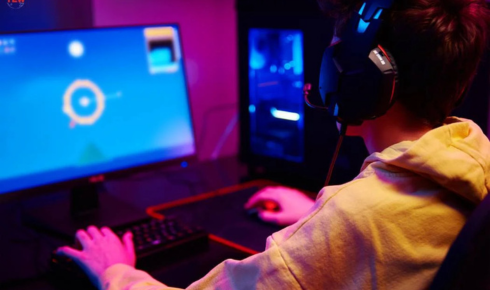- What is gamification in training?
Gamification in training is the utilization of game-like components (e.g., focuses, levels, challenges, rewards) to draw in understudies, persuade learning, and improve the instructive experience. It intends to make learning more intelligent, pleasant, and compelling.
- How does gamification further develop understudy commitment?
Gamification further develops commitment by establishing an intelligent and dynamic learning climate. It presents components of tomfoolery, rivalry, and accomplishment, which can expand understudies’ advantage in the material and support dynamic cooperation.
- What are the advantages of gamification in training?
The advantages incorporate expanded inspiration, upgraded maintenance, customized opportunities for growth, further developed coordinated effort among understudies, and the improvement of critical thinking and decisive reasoning abilities.
- How might gamification be executed in a study hall?
Gamification can be executed by presenting point frameworks, competitor lists, identifications, progress following, or by utilizing instructive applications and stages that integrate game mechanics. Instructors can likewise make difficulties, journeys, and awards to spur understudies.
- Might gamification at any point be utilized in all subjects?
Indeed, gamification can be applied across different subjects, from math and science to writing and history. The key is to adjust game components to fit the learning targets and subject substance.
- What are a few instances of gamification devices in training?
Famous gamification devices incorporate Kahoot!, Quizlet, Classcraft, Duolingo, and Teeter-totter, which permit educators to make tests, games, and intelligent opportunities for growth. These devices incorporate game mechanics like focuses, levels, and difficulties.
- How does gamification inspire understudies who are withdrawn?
For withdrew understudies, gamification gives a tomfoolery and intuitive option in contrast to conventional learning techniques. By offering prizes, challenges, and a pride, understudies are bound to feel spurred to partake and follow through with responsibilities.
- Does gamification work for a wide range of students?
Gamification benefits different kinds of students by offering various degrees of trouble, customized rewards, and numerous pathways to progress. Visual students, for example, may profit from the utilization of brilliant illustrations or progress bars, while sensation students could appreciate intelligent difficulties.
- How does gamification assist with expertise advancement?
Gamification advances the improvement of different abilities, for example, critical thinking, coordinated effort, decisive reasoning, and using time effectively. By finishing journeys or conquering difficulties, understudies upgrade both mental and interactive abilities.
- Could gamification at any point work on scholastic execution?
Indeed, gamification can work on scholastic execution by expanding commitment, empowering redundancy of key ideas through game mechanics, and giving quick criticism, which upgrades understanding and maintenance.
- What are a few difficulties to carrying out gamification in training?
Challenges incorporate obstruction from conventional teachers, the time and exertion expected to plan and execute gamified illustrations, guaranteeing impartial admittance to innovation, and offsetting fun with instructive substance to stay away from interruptions.
- How might educators quantify the adequacy of gamification in their homerooms?
Educators can gauge viability by following understudies’ scholarly advancement, checking their degree of commitment, noticing upgrades in maintenance, and social occasion criticism from understudies on how pleasant and spurring they found the gamified exercises.
- How could gamification encourage coordinated effort among understudies?
Numerous gamification techniques incorporate group based difficulties or helpful undertakings where understudies should cooperate to accomplish an objective. This supports correspondence, cooperation, and joint effort, which are fundamental abilities for future achievement.
- Is gamification in schooling pretty much utilizing games?
No, gamification is more than essentially messing around. It includes integrating game mechanics, like rewards, levels, and focuses, into non-game exercises to make learning seriously captivating. It’s tied in with establishing a climate where learning is intuitive and fulfilling.
- What might gamification do with customized learning?
Gamification takes into account individualized movement, as understudies can travel through various levels at their own speed, acquire rewards in view of their own accomplishments, and pick difficulties that line up with their learning styles and needs.
- What are the dangers of abusing gamification in training?
Abusing gamification can prompt understudies zeroing in additional on remunerations than genuine learning. It might likewise cause disappointment for understudies who don’t advance as fast as others, prompting serious insecurities or demotivation.
- Could gamification at any point work for understudies, all things considered?
Indeed, gamification can be viable for understudies, all things considered. For more youthful understudies, it can make learning fun and connecting with, while for more established understudies, it can give a more powerful and provoking method for concentrating on complex subjects or foster proficient abilities.
- How does gamification assist with developmental evaluation?
Gamification upholds developmental appraisal by giving constant input. Game mechanics like focuses, identifications, and advance bars permit instructors to evaluate understudies’ seeing ceaselessly and change guidance in view of understudies’ exhibition.
- How does gamification cultivate a development outlook in understudies?
Gamification supports a development outlook by stressing exertion and progress instead of fixed capacities. Understudies can perceive how their abilities improve as they progress through levels or difficulties, building up the possibility that learning is a ceaseless interaction.
- What’s the eventual fate of gamification in schooling?
The eventual fate of gamification in training is promising, with additional schools taking on game-based learning stages and systems. As innovation keeps on propelling, gamification is probably going to turn out to be considerably more vivid, customized, and incorporated into ordinary opportunities for growth.
Gamification in training can possibly change customary learning strategies by making schooling seriously captivating, fun, and viable. By grasping the advantages, difficulties, and applications, teachers can all the more likely saddle the force of gamification to further develop understudy learning results.
















